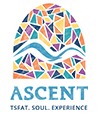Rabbi Shlomo HaLevi Alkabetz was one of the great kabbalists living in Safed during the time of the great luminaries of Kabbala, Rabbi Moshe *Cordovero ( Ramak) and Rabbi Yitzchak *Luria (Arizal). Rabbi Shlomo was born in Salonica c. 5260 (1500 CE) (according to some authorities he was born in 5265). He studied Torah under Rabbi Yosef Taitatzak. In 5289 (1529 CE) he married the daughter of one Yitzchak Cohen, a wealthy householder living in Salonica. Instead of giving his wife a more traditional wedding gift, he gave her his newly completed work Manot HaLevi. His father-in-law and brother-in-law apparently revered Torah scholars greatly for “their delight in receiving this gift was many times greater than if he would have sent them jewelry and precious stones of great monetary value.”
Shortly afterwards, Rabbi Shlomo and his wife decided to settle in the Holy Land. On the way there, the young Rabbi and his wife stopped over in Adrianople, Turkey. The townsmen, including a group of kabbalists, begged him to instruct them in the spiritual life and his methods of serving G-d. He agreed and wrote several works during his stay in this town – Beit Hashem, Avotot Ahava, Ayelet Ahavim and Brit HaLevi. This latter work he dedicated to his admirers in Adrianople.
Rabbi Shlomo eventually continued his journey, teaching wherever he went. Several men who were later to become great kabbalists themselves were deeply influenced by Rabbi Shlomo. Among them were Rabbi Shmuel Ozida (author of Midrash Shmuel on Pirkei Avot), Rabbi Eliezer *Azikri, author of Sefer Chareidim, a kabbalistic treatise on the correspondence of the limbs and organs of the human body to the 613 mitzvot of the Torah; Rabbi Avraham *Galante, author of Yareach Yakar on Zohar and other works.
Rabbi Shlomo arrived in Safed around 5295 (1535 CE) where he settled. Only in the Holy Land, he was insisted, could one fathom the secrets of Torah. Rabbi Shlomo attributed much of his depth of understanding to his custom of prostrating himself at the graveside of tzadikim. Many students gathered around him, including Rabbi Moshe Cordovero (Ramak), who married Rabbi Shlomo’s sister. It seems, however, that Rabbi Shlomo later became the student of Ramak, a testimony to his humbleness. Rabbi Yosef Caro was another student of Rabbi Shlomo. Rabbi Shlomo tells the story that he was once studying with Rabbi Yosef Caro when the latter’s Maggid (an angelic teacher) appeared to them. Rabbi Caro once asked his teacher to explain the kabbalistic meaning of the verse “the two great luminaries” (Genesis 1:16) which he did in a lengthy dissertation. It seems that he served as the head of a yeshiva in Meron, which lies across the valley from Safed. He also appears to have served as a Rabbi in Safed.
Rabbi Shlomo is most renowned for his Lecha Dodi hymn, sung at the inauguration of the Sabbath. It was composed according to kabbalistic teachings regarding the ascent of the sefira of malchut (which represents both the Shechinah and the Jewish soul) on the Sabbath, and it therefore expresses the yearning of the Shechina and the Jewish soul for the redemption. The hymn became so popular that it was incorporated into the Sabbath liturgy of every community. Rabbi Shlomo passed on in 5340 (1580 CE) and is interred in Safed.
